Opera House Apartments
Introduction
Text-to-speech Audio
The importance of a communal gathering places where individuals may interact with one another and share common experiences is vital to society. This so-called “third space”, in addition to home (first space) and work (second space), may take many forms such as church, a sports venue, museum, club or restaurant, or theater. In the first quarter of the 20th century that space in Antigo was the Opera House. It was a gathering place for live theater, cinema, social gatherings and lectures. The Opera House, one of Antigo’s more imposing buildings, stood at the western end of a thriving downtown, just blocks away from the railroad depot, a focal point of activity, and directly across from one of Antigo’s more luxurious hotels, the Lakeshore Hotel (later renamed the Hoffman House). From its opening in 1903 until the late 1920s the Opera House was the focal point of civic life in Antigo.
Images
The Opera House, at the western edge of a growing downtown, opened in 1903.
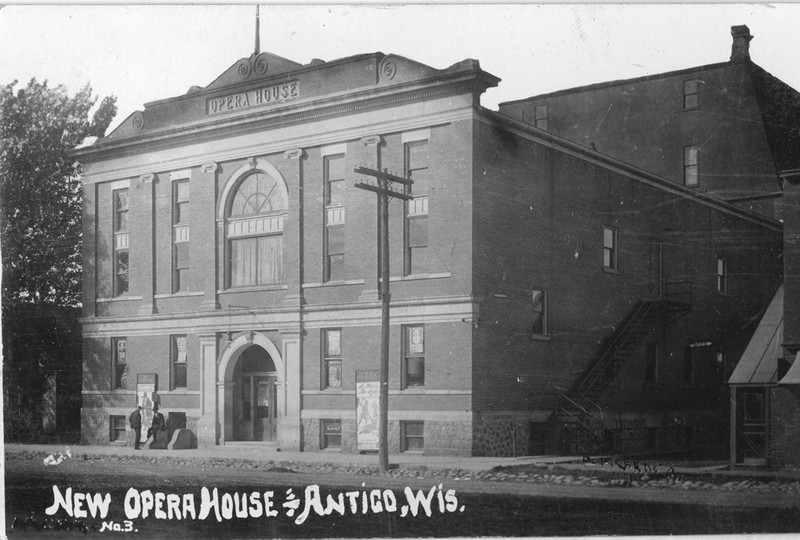
The stage curtain had ads of local businesses.
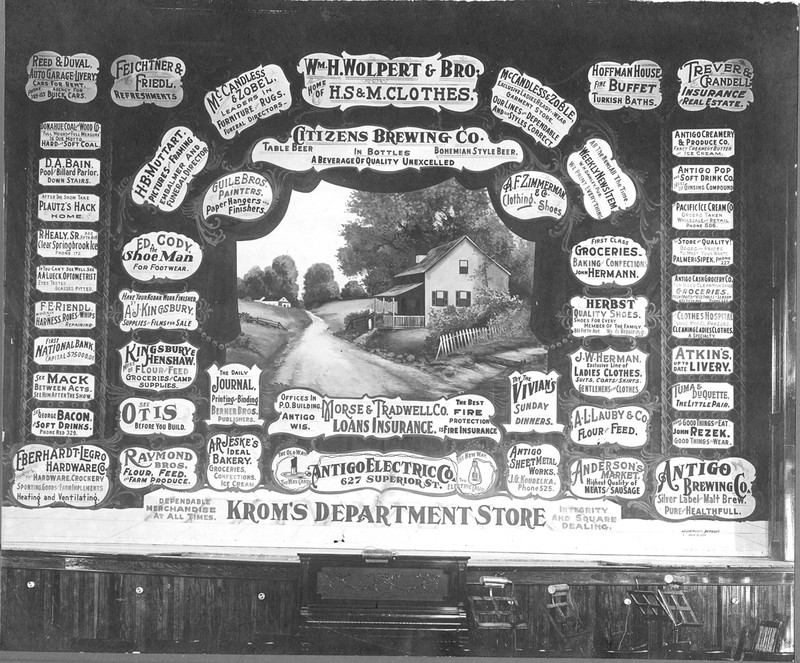
The view of the audience from the stage was taken using the advanced technology of a flash.
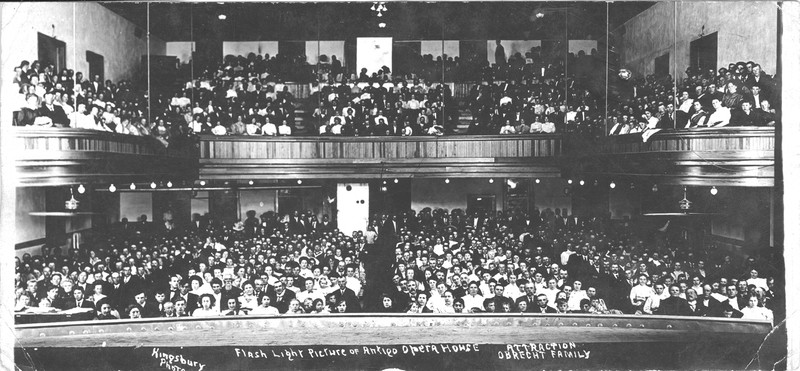
A dramatization of “Uncle Tom’s Cabin” was one of the more popular theater productions over the years.
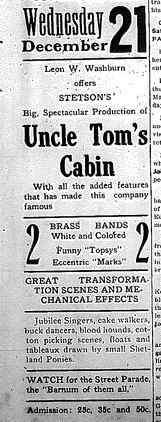
Dances, such as the Antigo High School Junior Prom, were a feature at the Opera House.
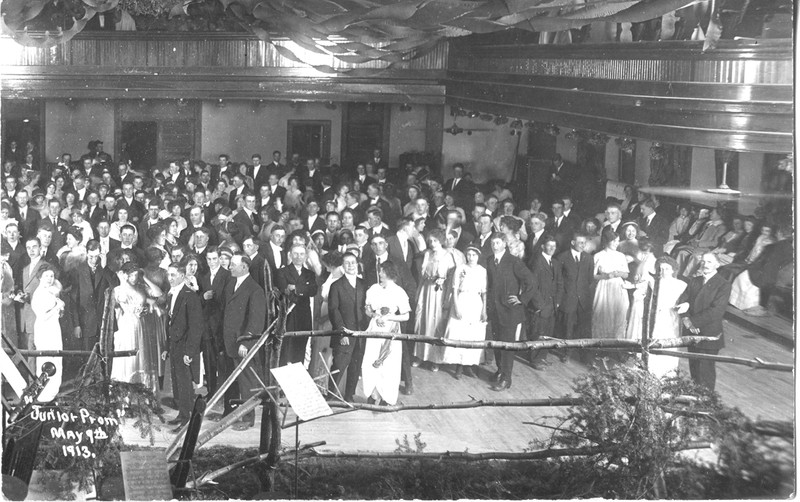
Films of sporting events such as the famous Dempsey-Tunny fight of 1927 were popular.

During World War I the Opera House became an Armory where soldiers trained. (Note the bugler on the roof.)
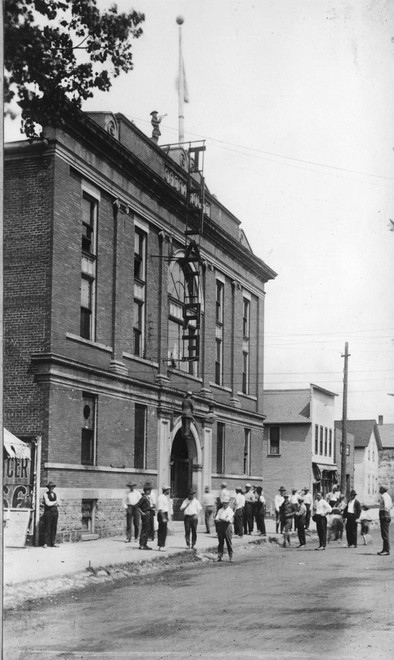
After World War I, the Opera House reverted to being a theater but changed its name to the Armory Theater.
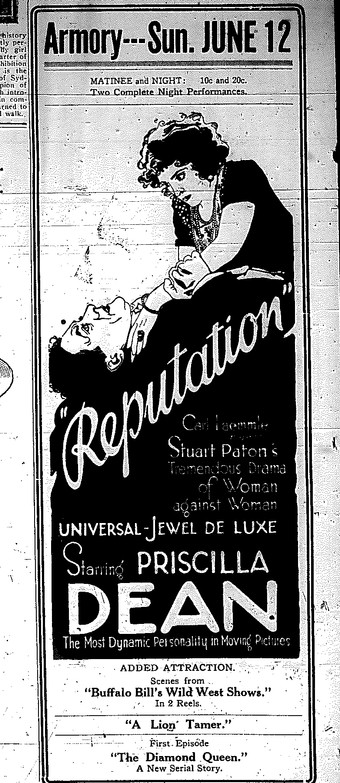
Backstory and Context
Text-to-speech Audio
Antigo was incorporated as a city in 1885 (1), with a population of just under 2,000 (2). Just 4 years later it had its first theater, the Bijou Opera House. But that theater was short lived, destroyed by fire 1895. (3) It was not long before planning for a new theater began. By 1903 the new Opera House opened. (4) It was located at the western edge of a thriving downtown, built at a time of rapid growth in Antigo. A new city hall, erected in 1900, a courthouse and Carnegie Library (now a museum) both built in 1905, and expansion of the railroad facilities all signaled the importance of a growing city. The luxurious Lakeshore Hotel (later renamed the Hoffman House and originally named for the Milwaukee & Lakeshore Railroad which initially served the city) was directly across the street and connected to the Opera House by an underground tunnel.
The three-story brick structure is in a Classical Revival style, characterized by a symmetrical façade and characterized by semi-circular arched openings. The theater seated a total of 1,100, the balcony accommodating 350. This amounted to ~15-20% of Antigo’s population. The stage had space for fifty performers and two railroad cars of scenery. (5)
The Opera House hosted a wide variety of entertainments, including vaudeville shows, concerts, and more serious dramas. One of the more popular plays was a dramatization of the novel “Uncle Tom’s Cabin” which was produced by several different companies a number of times over the years. Motion pictures, silent movies and, later “talkies” were also very popular, including blockbusters such as Birth of a Nation and The Hunchback of Notre Dame as well as documentation of events such as the Dempsey-Tunney boxing match in 1927. The silent movies were not silent. An orchestra played a musical sound track accompaniment. (3)
Social gatherings also took place. Dances in the Opera House (the Antigo High School Junior Prom and other events) took place by clearing the chairs on the main floor and having the musicians performing on the stage. From time to time, the Opera House served as a venue for industrial exhibits. Important figures spoke at the Opera House, including Robert LaFollette and Booker T Washington. (5) One of the more interesting talks took place in August, 1920. On August 20th, 1919, the 19th Amendment to the constitution had passed, earning women the right to vote. Shortly afterwards, on August 26th, residents of Antigo were scheduled to hear the first political speech in Antigo by a woman and one of the first in the state. Rose Moriarty of Ohio spoke at the Opera House on behalf of the Republican Party. The local newspaper reported; “Although Miss Moriarty comes here at the insistence of the ladies, the men are welcome to attend this speech. And they might as well get used to it, for, from now on, the political speaker must address his remarks to the ladies as well as the men.” (6)
When the U.S. entered World War I, in April, 1917, Antigo and rural Langlade County recruits formed a National Guard unit. The city searched for a training site and selected the Opera House as a potential location. Lacking funds, they approached John Hanousek, a wealthy businessman, for a loan. He surprised them by agreeing to purchase the building and pay for its remodeling required for repurposing. (7) The soldiers would eventually form the 107th Trench Mortar Battery Company and fought in France. In May, 1919 the 107th Trench Mortar Battery Company returned home to a grand reception and parade to the Armory (Opera House) where John Hanousek catered and, acting as head chef, hosted a dinner for soldiers, family, and well-wishers. About 800 meals were served from early afternoon to evening. Soon afterwards the building reverted to its original function as a theater and gathering place, and became known as the Armory Theater. (8)
In 1929 the local Eagles Club purchased the building and used it as a public hall. In 1951 it again became a National Guard armory until 1977 when the National Guard moved to a new facility. The Opera House lay vacant until 1983 when it was purchased by local businessmen and converted into apartments. It is on the National Register of Historic Places. (5)
Sources
(1) Robert M. Dessureau History of Langlade County Wisconsin, Berner Brothers Publishing Company, 1922. page 98
(2) Deleglise & Hutchinson 1894 Woodland Homes in the New Northern Wisconsin. Booklet: a promotional booklet accessible at http://langladehistory.com/All-FAD_Hutchinson_promo_booklet.pdf
(3) Edmund Hanus. "A History of the Hanus Family's Association with the Theater and Show Business” Unpublished manuscript in Antigo/Langlade County Historical Monographs Vol. III, 1979 available at the Langlade County Historical Society Museum
(4) Antigo Daily Journal Apr. 30, 1903 page 1
(5) National Register of Historic Places: https://catalog.archives.gov/id/106781460
(6) Antigo Daily Journal Aug 25 1920 page 4
(7) Antigo Daily Journal June 6, 1917 page 1
(8) Antigo Daily Journal May 17, 1919 page 1
